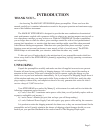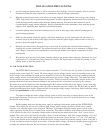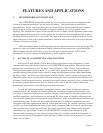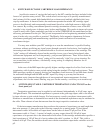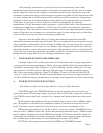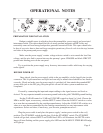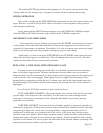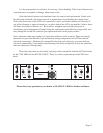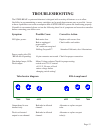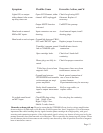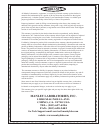3. SWITCH-SELECTABLE CARTRIDGE LOAD IMPEDANCE
An effective means of varying the load seen by the MC cartridge has been included in the
form of a 5-position rotary switch. This switch selects various taps on a specially manufactured
dual-primary bi-filar wound, high-bandwidth low-resistance and multiple-shielded nickel-core
step-up autoformer. A drama to make, the autoformer permits the minute MC cartridge signal
power to be efficiently and transparently transformed from low-volts/high-current to high-volts/
low-current. By avoiding conventional parasitic cartridge termination resistors, none of the MC
cartridge’s tiny signal power is thrown away before amplification. This results in improved system
signal-to-noise ratio. Quite worthwhile provided, as in the STEELHEAD, the autoformer has the
necessary performance for the job. This pivotal component has had engineering attention lavished
upon it in the only way possible or practical: The Manley Labs magnetics department. In-house
transformer prototyping and manufacturing capabilities permit realization of extraordinary
transformer designs.
You may now audition your MC cartridge at or near the manufacturer’s specified loading
resistance without sacrificing any signal power through a parasitic load resistor. And explore the
interesting tonal shifts caused by intentional mild or severe mis-termination of the cartridge. The
“right” setting will ultimately depend on the cartridge in use, type of music being heard, other
downstream equipment and, most importantly, your personal preference. There will no doubt be
moments when a technically “wrong” setting will be musically “right” for a given situation. Do
rest assured that, in this instance, a technically wrong setting is completely harmless for all
equipment involved.
In the case of the MM input, the typically higher cartridge output levels allow fixed resistor
termination, with clockwise-most switch setting being the standard 47k-ohm load resistance. Those
MM cartridges capable of properly driving low impedance loads between 25 and 400 ohms should
be auditioned through both the MM and MC inputs. By doing so you may find the most
appropriate sonic character through the use of unconventional input arrangements. In short,
experiment; don’t let the control labeling stop you. On the contrary, we invite you to tweak away!
4. SWITCH-SELECTABLE CARTRIDGE TERMINATION CAPACITANCE on the
front panel yet!
Termination capacitance may be applied to each channel independently in 10 pF steps, up to
1100 pico-Farads. The termination capacitance is present at the gain-stage inputs, and is not affected
by input selector or gain switch changes. For best accuracy consult your phono interconnect cable
literature or manufacturer to determine how much of the termination capacitance may be attributed to
the cable. Then subtract at least that amount from the target capacitive termination value.
If the interconnect manufacturer does not know the amount of capacitance per unit length that
their wire presents (!), then refer to the following example for a starting point: Typical phono
interconnect cables will exhibit self-capacitance on the order of about 30 pF per foot. If the
interconnect cable is 3 feet (~ 1 meter) in length, you may expect about 90-100 pF of input
capacitance to be present due to the interconnect cable alone. If the cartridge manufacturer specifies a
load capacitance of 150 pF then it is best to subtract the cable’s portion, i.e. 90 pF. This yields a
balance of 60 pF. Thus, the audition should start with the termination capacitance switches set to 60
pF.
Page 6





